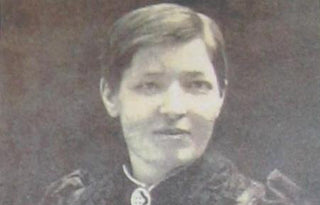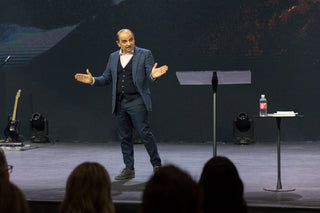Mary Slessor worked for forty years in what is now Nigeria, proclaiming Christ faithfully but, in the process, changing an entire culture.
Born in 1848 Mary grew up in extreme poverty in Dundee, Scotland, where she had little formal education, starting full-time work at the age of fourteen. Although her father was an alcoholic, her mother brought up her seven children in the Christian faith and Mary was converted at the age of twelve. Working as a young woman in a linen mill, Mary educated herself through reading and developed a passion for sharing Christ. On hearing of the death of David Livingstone, the famous Scottish missionary, she felt called to follow in his footsteps. She applied to a Presbyterian mission and left for West Africa in 1876. She was sent to the Calabar region in the south-east of modern Nigeria which had a daunting reputation for killing or invaliding missionaries. Mary, barely five-foot tall with red hair and blue eyes and, by her own admission, ‘wee and thin and not very strong’, was not expected to last.
For three years Mary was based at a mission where she learnt the language and culture of the Efik people. What she encountered was alarming – a world of fear and superstition with murderous feuds, bloody and often fatal punishments, and regular human sacrifices. Slavery and polygamy were widespread and women were treated with brutality. A particular offence to missionaries and Mary was that because twins were considered the product of demonic forces, they were brutally and immediately killed. Many of these evils were increased by the cheap alcohol shipped in by the European powers.
Mary moved inland to work. Mission societies then were committed to such Victorian values as formality, decency and good manners, especially for women workers. By nature rebellious and recognising that these values created barriers with the local people, Mary held lightly to them. She lived alone with the native community eating the same food they did. She rejected the mission dress code: abandoning petticoats, gloves, high boots, long hair and a hat in favour of cotton dresses, short hair and going bare-headed and often barefoot. Helped by a remarkable ability with the language and humour and cheerfulness, Mary soon became integrated with the local community.
Mary both preached Jesus and sought social change. She denounced murders and human sacrifices, preached against drunkenness and superstition and encouraged education. She led by example, not just condemning the murder of twins but rescuing them and finding them homes – she was to adopt eight children herself. Acquiring basic medical skills, she treated illnesses and injuries. She stopped feuds, sometimes physically intervening. Yet Mary was not just brave but also wise; she built alliances, supported reforming chiefs and took the lead in social projects. Recognising that many of the problems in Calabar culture were rooted in poverty, she sought every opportunity to provide employment. Increasingly recognised as a neutral and respected party, Mary found herself settling disputes and dispensing judgement.
Mary paid a price for her ministry. Although fiercely independent, she was frequently lonely and suffered from malaria and other ailments. She also endured a romantic loss, becoming engaged to a fellow missionary only to be told by the Mission Board that any marriage meant she would have to abandon her work in the interior. Mary found it an impossible demand and the engagement was broken off.
With time Nigeria came under direct British rule and the new colonial government sought to impose law and order. Mary’s unrivalled authority in the Calabar community was acknowledged by her appointment as vice consul; in effect, the first female judge in the British Empire. Her decisions were universally respected, although she could be idiosyncratic to the point of disciplining troublesome men by boxing their ears!
Increasingly frail and prematurely aged, Mary became something of an honoured legend both in Nigeria and worldwide. Her death in 1915 was greeted by universal sorrow amongst the Calabar community and the British authorities granted her something of a state funeral. An imposing cross of Scottish granite marked her grave and, in 1956, Queen Elizabeth II laid a wreath on it.
Mary Slessor was an inspirational missionary. She preached powerfully and encouraged the development of churches. A pioneer of what we now would call holistic mission, she battled against every kind of social evil, imposed peace, laid down the law and encouraged education. She was utterly unconventional to the point of eccentricity and reckless in how she existed: living alone, drinking unfiltered water and ignoring mosquito nets. Her bravado – physically seizing weapons, slapping troublesome chiefs or walking in between warring factions – could easily have gone very wrong. She was frequently in confrontation with her own mission organisation.
Mary Slessor’s importance in the region was such that she became widely known as the ‘Queen of the Calabar’, a title she rejected. Yet there is a truth in the title: she did rule, but she ruled through serving.
First, Mary Slessor served the kingdom. Throughout her life she preached Christ and did good in his name. She never let either her social initiatives or legal duties distract her from preaching Jesus. Mary Slessor wrote: ‘Why should I fear? I am on a Royal Mission. I am in the service of the King of kings.’ Indeed, we are too.
Second, Mary served women. Mary had an impact on every aspect of Calabar culture but she brought particular improvements to the lives of local women. Her influence, however, went far wider. As a result of her achievements, mission organisations everywhere began to reconsider the role of women. And beyond the mission field, when there was a push for women’s rights in many countries in the early twentieth century, Mary Slessor was often cited as proof of women’s abilities.
Finally, Mary served those she was sent to. Mary gave herself to the Calabar community. She did good and encouraged others, whether native chiefs or colonial authorities, to lead and rule wisely.
Mary Slessor also wrote this prayer: ‘Lord, the task is impossible for me, but nothing for Thee. Lead the way and I will follow.’ May we be willing to pray the same prayer.
J.John
Reverend Canon




